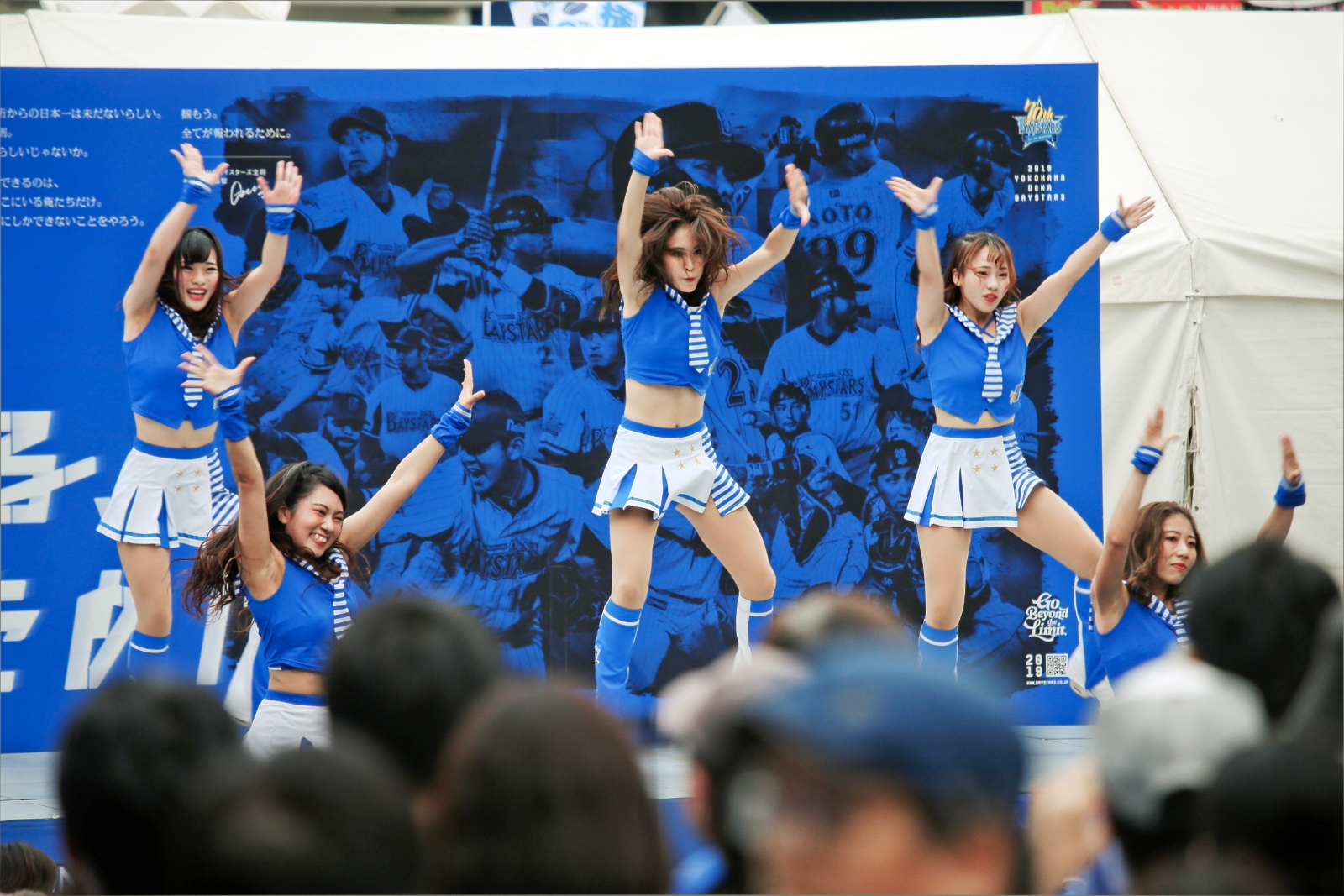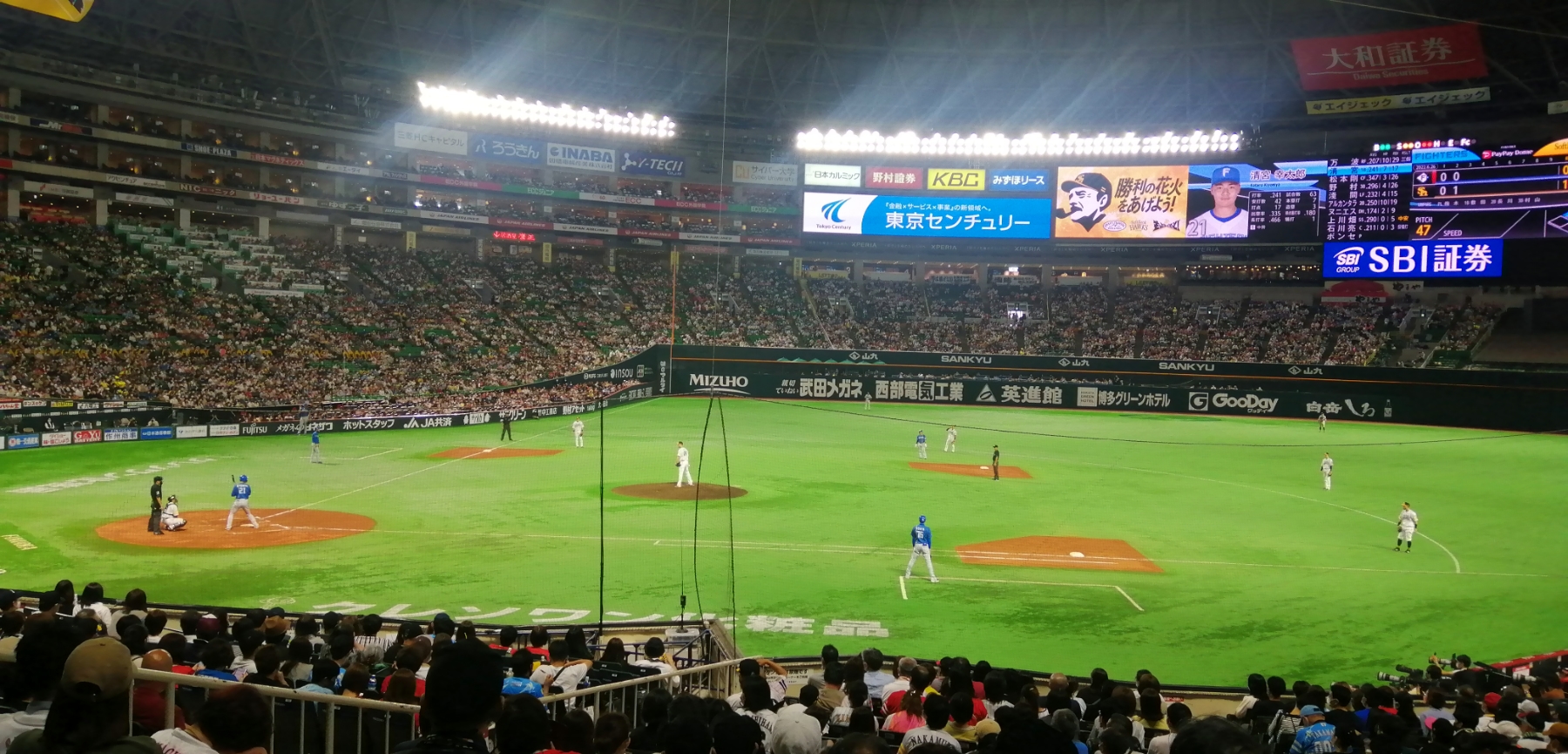One evening in Tokyo’s Meiji Jingu Stadium, I sat thinking about other things as my beloved Yakult Swallows’ bullpen imploded, blowing yet another late-game lead.
The team’s on-field ineptitude lent itself well to daydreaming. Celebrated Japanese novelist Haruki Murakami was sitting in Jingu’s right field seats when it first occurred to him to write a book; the Swallows’ history of miserable seasons stretches back decades.
On this particular night, I was imagining a journey across Japan to visit the home stadium of each of Nippon Professional Baseball’s (NPB) 12 teams. It would take a while, but baseball is an unhurried sport that appeals to patient minds.
I decided to do it.
The journey begins
Belluna Dome, the bizarre result of some architect’s fever dream, sits in the city of Tokorozawa in very rural Saitama Prefecture. Home to the Saitama Seibu Lions, it was constructed on the side of a steep hill, resulting in “climbs” to the restrooms. A domed roof hangs above — but not connected to — what was originally an outdoor stadium. In lieu of actual chairs, the outfield seating area features a hard, open slope, with enterprising fans spreading picnic mats for a seemingly long, uncomfortable afternoon.
I sat elsewhere.
During the “Lucky Seven,” NPB’s name for the seventh inning stretch, Lions fans blow up blue balloons that they release together at the end of the team’s fight song. The “jet balloons” all whistle and shoot up into the air in a fun scene. A generous woman sitting nearby handed me a balloon so I could join in. Later, I’d see jet balloons at other stadiums along my journey. They’d always remind me of that Lions fan’s kindness.
(Note: Since this visit actual seats have been added to the outfield, favoring comfort over quirkiness.)
Rakuten Seimei Park Miyagi
The Tohoku Rakuten Eagles’ home ballpark in Sendai has a Ferris wheel beyond its left field wall: a pretty feature and Japanese pro baseball’s sole outfield artifact. It’s a beautiful stadium, evoking both modern and classic sensibilities.
There is also a nice selection of (sometimes quite stylish) in-stadium bars and restaurants, a rarity for Japanese ballparks which often lean on simple and greasy finger food.
In their effort to create a “smart stadium,” sponsor Rakuten only permits cashless payments at games, headlined by a wide variety of Rakuten payment apps, Rakuten cards and Rakuten point schemes.
For our convenience, of course.
Food

Those new to the country may be unaware, but the unofficial “Japanese Bylaw of Regional Travel” mandates that, when visiting another prefecture or region, one is required to eat that area’s famous dish whether one wants to or not. Failure to comply with this Bylaw will result in scornful derision from one’s Japanese colleagues upon return to the office the following Monday.
Therefore, I dutifully lined up for some stadium gyutan (beef tongue) in Sendai, tebasaki (Japanese chicken wings) in Nagoya and lemon-flavored kakigori (shaved ice dessert) in Hiroshima. Did you know that Hiroshima is famous for lemon? I didn’t, but that’s what the sign said, so my hands were tied on the matter.
As I sat munching on some takoyaki (battered octopus balls) in the futuristic-looking Kyocera Dome during an Orix Buffaloes game, I dared wonder how Osaka’s famous version of the dish actually differed from anywhere else’s. To my unrefined palate it seemed, well, identical. Still, the Bylaw.
Rainy day blues

The Chiba Lotte Marine’s oceanside Zozo Marine Stadium is known for its wildly fluctuating weather patterns. On my visit, unfortunately, conditions remained steady. It was a bitter cold spring day with constant rain.
Roki Sasaki, the Marines’ first-year pitching prodigy, had thrown a perfect game three Sundays prior, amassed an eye-popping 14 strikeouts two Sundays previous and recorded the third win of his rookie season the last Sunday. This Sunday, today, with a stadium full of expectant onlookers and newly-minted Roki superfans, the pitcher was given the day off to rest.
Then, the visiting Nippon-Ham Fighters tallied nine early runs, effectively ending the competitive nature of the game and leaving us all to sit in the cold rain for a few more hopeless hours.
Many of the Marines’ faithful remained to the bitter end. Hats off to them.
The soulless domes

The Yomiuri Giants’ Tokyo Dome. Vantelin Dome Nagoya, home of the Chunichi Dragons. Kyocera Dome. Did I really go to all these places? Their unremarkableness blends them together in my mind.
Baseball is an outdoor sport. Domes dampen the gloriously satisfying sounds of the game: the crack of the bat, the ball smacking into a glove, the trumpets and drums and songs from the stands. Inside a dome, cheering resembles the weak enthusiasm mustered from parents at a youth soccer game — their discussions about mortgages and bath towels interrupted by a goal scored off the foot of someone else’s child.
You can point out that domes make sense in a country with a pronounced rainy season, and you’ll get no argument from me. But give me some fresh air and a summer sunset over these bland, sterile environments any day.
Hiroshima Carp

Mazda Stadium Hiroshima, the home diamond for the Hiroshima Toyo Carp, was my favorite. It has a “modern/retro” style of gratifyingly classic architecture, beautiful mountain views and a fantastic fanbase.
Bonus feature: wide seats and plenty of legroom. Many Japanese stadiums rival airlines in their black-hearted calculations of just how little space human beings need for prolonged sitting.
In-house entertainment

Baseball brings out the traditionalist in me. That inner curmudgeon enjoys sighing loudly enough for the people around to hear when there are just too many dancing mascots on the field. At some point, a well-turned double play needs to get more of the focus than the backflipping cheergirls.
The good: the Fukuoka SoftBank Hawks at Fukuoka PayPay Dome and the Hokkaido Nippon-Ham Fighters’ Sapporo Dome both do a nice job of energetic and creative (but not overbearing) entertainment, keeping both teams off the “Soulless Dome” list.
The bad: the Yokohama DeNA Baystars put perhaps too much into their gameday revelry at Yokohama Stadium. As we all know from our schooldays: trying too hard to be cool certainly makes you not so.
The human touch

Many journeys are most strongly defined by the characters we meet along the way.
At a Swallows game in Hiroshima, I made eye contact with an elderly man in my section who was similarly decked out in Swallows green — although he had apparently raided the Swallows’ merchandise counter and had every manner of official trinket pinned to or dangling from his person. Sitting alongside him was his disinterested wife. Smiles and nods were exchanged. Then, fist pumps after key plays. Finally, he came over after the game. He wanted a photo together, but turning with his camera, he found his wife had already started walking toward the exit.
At Yokohama Stadium, my companion and I made an error. A misreading of the seat map on the digital ticket terminal resulted in seats one in front of the other, rather than beside. After a few innings of awkward leaning-forward conversations, the gentleman sitting next to my friend stood up and motioned for us to switch places. For his trouble I bought him some “Bay gyoza,” stadium dumplings provided by a company in neighboring Chinatown (because, you know… the Bylaw). He sent some beers our way in return.
At a SoftBank Hawks game, the young woman seated behind me was none too pleased at the repeated home runs the Swallows were sending over the wall. As I stood up to celebrate the third one, she let out a whiney “Yadaaaaa! (Nooooo!)” and threw her black-and-yellow Hawks towel at me. I was both uninjured and pleased.
Hanshin Tigers

The final ballpark to be checked off on my list was the venerable Hanshin Koshien Stadium in Osaka — Japan’s oldest and home to the Hanshin Tigers. Ivy grows on its brick façade, which would be a nice, old-timey visual if someone hadn’t built an elevated highway directly — directly! — in front of it.
Google searches confirm that every photo of the stadium’s exterior is from an awkwardly close angle, often with the highway cutting off a top corner of the shot.
This historic stadium lived up to its legendary reputation, and my pilgrimage was a satisfying one.
Interestingly, at Koshien — though at none of the other stadiums I visited in 2022 — fans openly flouted the no-singing, no-chanting coronavirus pandemic-era rule for all Japanese ballparks.
I mentioned this to a friend back in Tokyo, and he nodded sagely.
“Osaka people,” he said.
And that was that.
Yakult Swallows

Like any good journey, this one ends back at home.
When I was new in Tokyo and choosing a team, I visited all five stadiums within an easy train ride from central Tokyo. I watched the fans, walked the concourses, soaked in the vibes.
From my eye, Yakult Swallows fans weren’t the trendiest. They shuffled into Jingu Stadium with well-worn shoes, clutching handmade signs and snacks brought from home. Their famous umbrella celebration has humble roots, too: the inexpensive prop they raise after every run scored was originally chosen because everybody already has one at home.
Look at the team’s name, for crying out loud: they’re sponsored by a 65 milliliter yogurt drink, while playing against railroads and tech giants. In a city where image is everything, the lack of pretentiousness among Swallows supporters was refreshing.
I had found my people — and my team.
And after touring Japan’s baseball palaces, I’m even more convinced that I’m where I belong: daydreaming about other things in the Jingu stands.
© Japan Today Take our user survey and make your voice heard.
Take our user survey and make your voice heard.















1 Comment
Login to comment
rainyday
Nice article. I strongly agree that the Domes are boring and unremarkable. I very much wish my team didn't play in one.